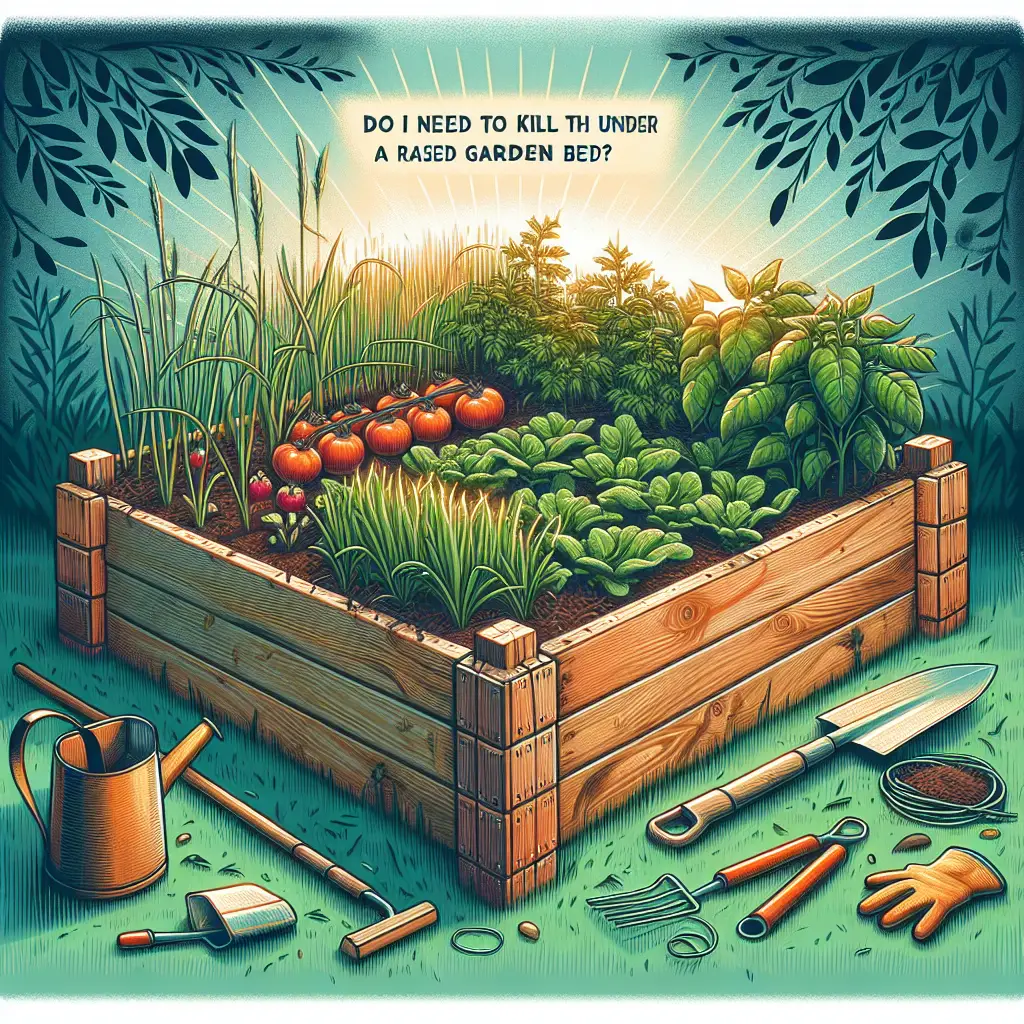Title: Do I Need To Kill The Grass Under A Raised Garden Bed?
Gardening enthusiasts often face the conundrum of preparing the perfect canvas for their plant dreams. A question that often sprouts up is: do you need to remove or kill the grass under a raised garden bed? The answer is nuanced, and I’m here to dig deeper into the soil of this topic to help you cultivate the best approach for your green space.
The Short Answer Is: It Depends
Raised garden beds offer many advantages. They can lead to better drainage, improved soil conditions, and a defined gardening space. Additionally, they can be a boon for your back by minimizing the need to bend over. But before you raise your plants above ground, let’s talk about the grass situation.
Why Consider Killing The Grass?
The grass beneath a raised garden bed can be more than just an underlayer; it can become a rival to your plants. Grass roots are notorious for their tenacious nature, competing with your veggies and flowers for crucial nutrients and water. Furthermore, grass can grow into your raised bed, leading to an unwanted green invasion that could overwhelm your tender crops.
Methods To Kill Or Suppress The Grass
There are several schools of thought when it comes to dealing with grass under raised beds. If you decide that the grass must go, here are a few ways to tackle the issue:
Solarization
This method involves using the sun’s rays to heat the soil and kill the grass beneath a clear plastic tarp. Over time, the concentrated solar energy cooks the grass and its seeds, leaving you with a sterilized plot. This process, however, can be time-consuming and is best started several weeks before you plan to plant. Here’s a guide on solarization from the University of California Cooperative Extension that’s quite illuminating.
Herbicides
You could opt for a chemical herbicide to apply to the grass. Glyphosate is a common ingredient found in many non-selective herbicides, which means it will kill most plants it comes in contact with, not just the grass. Please use with caution and follow the manufacturer’s instructions closely. However, be mindful of the potential environmental impacts such chemicals can have. Here’s a report on glyphosate and its effects from Nature journal.
Smothering
Perhaps the most environmentally friendly method is smothering the grass with layers of cardboard or newspaper, topped with compost. This not only suppresses and eventually kills the grass but also decomposes to enrich the soil. The Old Farmer’s Almanac offers sage advice on using paper products in the garden.
Physical Removal
Lastly, the tried-and-true method of physically removing the grass with a shovel or sod cutter is always an option, although it can be labor-intensive and disruptive to the soil structure.
The Non-Lethal Route
Alternatively, you might decide not to kill the grass at all, instead opting to build your raised beds directly on top of the lawn. This approach can work quite well, particularly if paired with a high-quality landscape fabric or a thick layer of cardboard at the bottom of the bed to act as a barrier between the grass and your garden soil.
Here’s where you can purchase a durable landscape fabric that may spare you the trouble of having to remove grass altogether.
Advantages Of Not Killing The Grass
- Soil Structure Preservation: Not disturbing the existing grass means you’re keeping the soil structure intact. The microorganisms and worms that make your garden’s ecosystem thriving will thank you.
- Less Labor: Clearly, not having to remove or kill the grass before setting up your raised bed saves you time and energy.
- Natural Compost: As the grass dies naturally, it will decompose and provide nutrients to your plants.
Final Considerations
Regardless of the path you choose, make sure your raised garden beds are set up for success. Consider the materials you use for the bed, the quality of your soil, and the needs of the plants you intend to grow.
Remember, the goal is to create an environment where your plants can flourish with minimal competition and maximal joy. By tending to the needs of your garden with understanding and care, you aren’t just cultivating plants—you’re nurturing a small ecosystem that can be a source of beauty, food, and learning for years to come.
In conclusion, whether you decide to kill the grass below your raised garden bed or not, it’s important to consider the specific needs of your garden, your commitment to maintenance, and the ecological impact of your choices. With the right approach, your raised bed can become a thriving hub for your gardening adventures.
Happy planting, and may your thumbs always be green!

